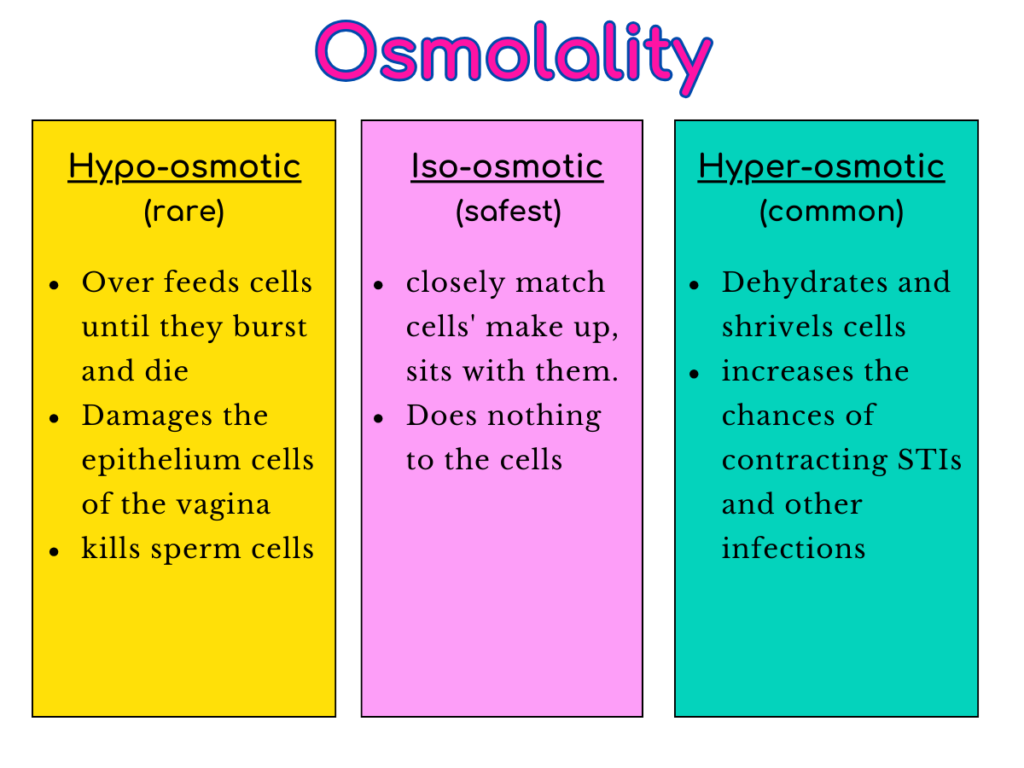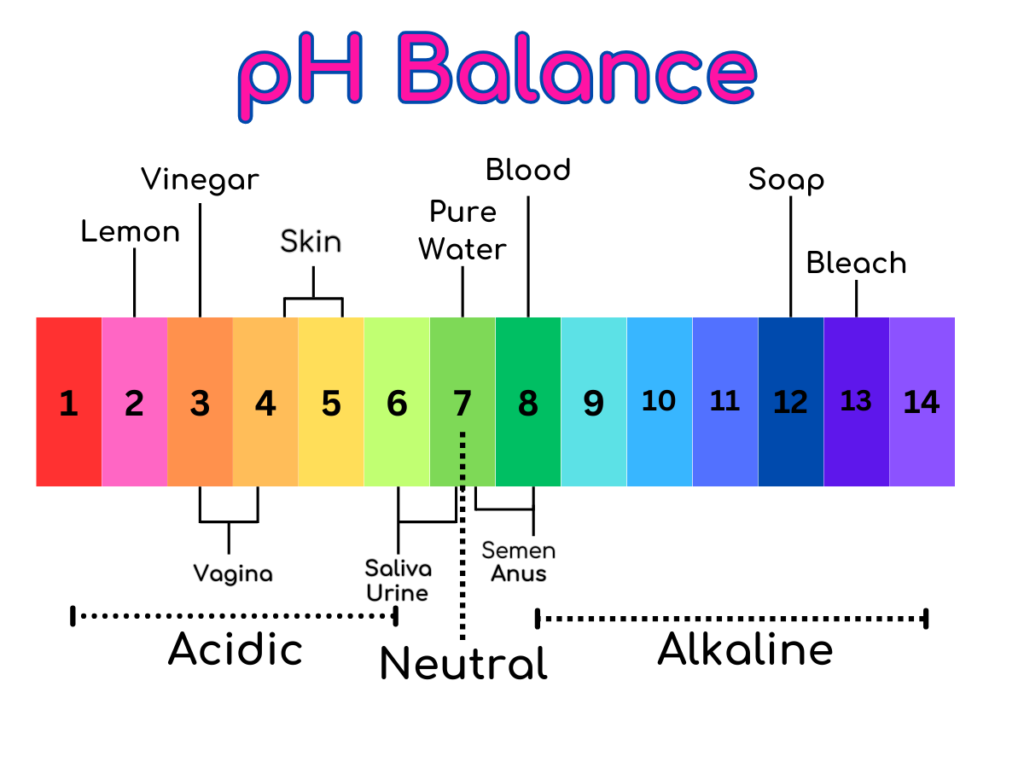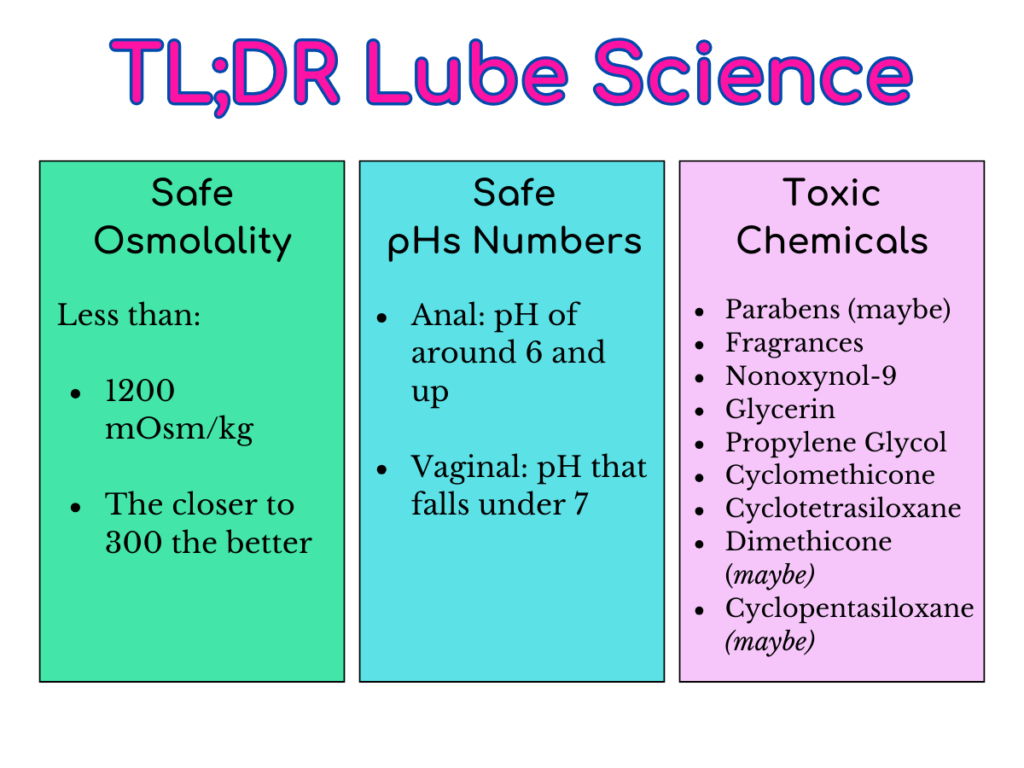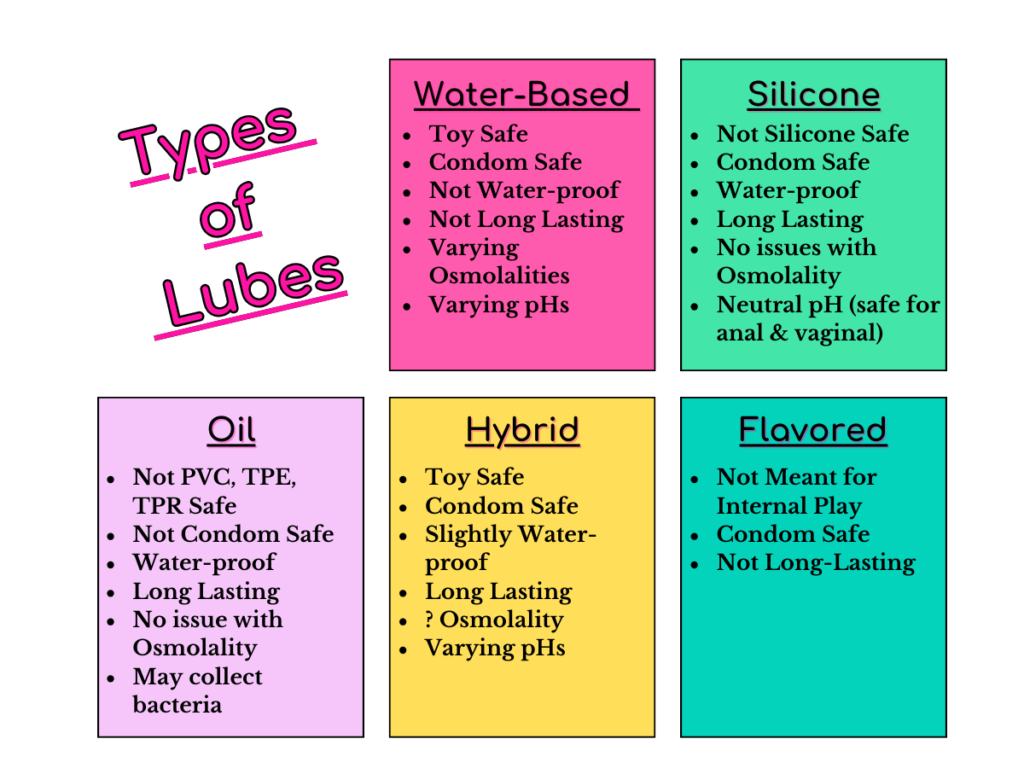
There are 5 types of lubes on the market; water, silicone, oil, hybrid, and flavored. They all have their own unique benefits, uses, and risks. Their unique qualities make it a pain to just walk in and get a bottle off the shelf.
On top of that many of the lubes out there contain harmful chemicals such as fragrances, Nonoxynol-9, and Glycerin. And it’s hard to know which one is body-safe just by looking at it.
Hell, there are so many things to remember when buying lubes it will take more than just a simple sentence to sum it up. Hopefully, I can break it down into easy pieces with this Introduction to lubes.
The Science
Before you even think about buying lube, you have to take a crash course in chemistry, or at least that’s what it felt like. Buying lube isn’t the walk in the park it should be and sometimes getting straight answers on a product can feel impossible.
Companies rarely provide consumers with enough information to make an on-the-spot informed decision, and if they do, most of us wouldn’t know what to do with that information.
This section attempts to simplify the science of lube in hopes of making your search easier. Ah, I hope that lubes will one day come with nutrition-style labels on the back that list; the chemicals, pH, and osmolality.
Note: Osmolality and pH generally apply to water-based lubes. This is because silicone and oil-based lubes have no water in them, which is what Osmolarity and pH need for their data.
Osmolality
Explaining Osmolality in simple terms is hard. After hours of research, I still haven’t found the correct way to phrase it. Luckily, you don’t have to understand the entire concept. Just know that the cells try to maintain homeostasis (maintain stability), which means that any change to their external environment will cause them to need to adjust to return to their original state.
When we add something new to our cells’ environment, such as lube, we run the risk of affecting this homeostasis. The osmolality of the lube largely affects this homeostasis and different types of lubes have different osmolalities.
When discussing Osmolality, there are 3 terms to know; hypo-osmotic, hyper-osmotic, and iso-osmotic.

Hypo-osmotic substances will feed your cells so much that they will burst and die as they attempt to maintain homeostasis. Iso-osmotic substances closely match your cells’ makeup; therefore, they just sit with your cells and do nothing. Hyper-osmotic substances will dehydrate your cells and leave them dry and shriveled as they attempt to maintain homeostasis.
When a lube is hypo-osmotic, it will cause damage to the epithelium cells of the vagina and kill sperm cells. These lubes are NOT recommended for anyone, but especially not if you are trying to conceive.
When a lube is Iso-osmotic, your cells do a happy dance. Iso-osmotic lubes match your cells’ makeup so closely that they do nothing but sit with them when they come into contact. Iso-osmotic lubes are the safest to use.
When a lube is hyper-osmotic, it drys out the cells around it, which increases the chances of contracting STIs and other infections. Unfortunately, most lubes on the market are hyper-osmotic.
According to the World Health Organization, water-based lubes should be at least below 1200 mOsm/kg to be safe. The general rule of thumb is the closer it is to our bodies’ natural osmolarity, the better, which for a human is around 275 to 295 mOsm/kg (lubes with osmolarities of 300 mOsm/kg are the safest).
Note: Most lubes do not have osmolality test results. To find out if the lube you are looking at has, a quick search of “lube name osmolality” may help.
pH Balance
pH balance, in simple terms, is the scale that measures how acidic or basic a water-containing substance is. The scale ranges from 0-14, with 0 being the most acidic and 14 being the least. The middle of the scale, which is 7, is considered neutral (neither acidic nor basic); a prime example of this is pure water.
Different types of lubes have different pH numbers; part of keeping your body healthy is keeping your pH balanced. Imbalances can occur if you use a lube with a drastically different pH from the part you use it on. These imbalances leave the area susceptible to infection and can cause burning or discomfort.
When buying a lube, to avoid irritation and infection, the pH balance should closely fall into the same pH range as whatever internal part you plan to use it for. Just because it’s ok for the vagina doesn’t mean it’s ok for anal and vice versa.

The vagina has a pH that ranges between 3.5-4.5, which makes it slightly acidic. This acidity kills off bacteria, such as those that cause yeast infections.
Using a lube that has a significantly high pH can spike up the pH in the vagina, making it unable to kill the bacteria effectively. This leads to an increase of bacteria in the vagina, which increases the likelihood of vaginal issues. When looking for a vaginal lube, it’s best to look for a pH that falls under 7.
The pH of the anus ranges from around 7-8, which makes it slightly basic. Using a lube that has too low of a pH will be too acidic. This can cause irritation and tissue damage to the area. When using a lube for the anus, look for a pH of around 6 and up.
Note: Lube companies don’t put the pH directly on the package. You can find out the pH on your own with either a quick Google search or using some pH test strips.
Watch Out For Chemicals
Parabens (Maybe)
Parabens are additives that help prevent bacteria and mold from growing in lube. There have been some studies that suggest parabens can cause cancer, but many of them were conducted under flawed and extreme circumstances. It’s widely up for debate on whether you can even use enough lube in your lifetime for it to have cancer-causing effects.
Paraben-free is beneficial because the fewer chemicals in your lube, the better, but don’t automatically think paraben-free means safe.
Fragrances
Sometimes, certain types of lubes add fragrances to their ingredients to create a more appealing smell. As alluring as that may sound, it doesn’t come without downsides. Fragrances, including natural ones, are too harsh to use on the vagina or anus and can irritate when used.
Nonoxynol-9
To make safe-sex products more effective, companies add the spermicide Nonoxynol-9 to condoms and lubes. It was once believed to kill bacteria that cause STIs. However, that is no longer true, new studies show it increases someone’s chances of contracting an STI.
Along with these chances, Nonoxynol-9 also irritates and kills off the cells in the vagina and anus.
Glycerin & Propylene Glycol (Water-based)
Glycerin is an alcohol-based sugar commonly found in water-based lubes. Propylene Glycol is a thick chemical liquid that is sweet. Both of these chemicals are in water-based lubes for the same two reasons. One, it helps substances retain their moisture, which helps the lube stay slippery longer. And two, glycerin is sweet, which makes it perfect for flavoring lubes.
The issue with these two substances is that they both have been known to have adverse effects. When used in the vagina, some data suggest glycerin & propylene glycol can cause an overgrowth of bacteria leading to an increased chance of bacterial & yeast infections.
Another issue is adding these to a substance increases the osmolarity. And, as we learned in the previous section, an increase in osmolarity is an increase in the user’s susceptibility of contracting STIs and other infections.
Silicone Lube Watch-Outs
Cyclomethicone & Cyclotetrasiloxane
Even though both of these silicones are safe to use in cosmetic products, it’s widely up for debate if they are safe to use inside our bodies. There’s research on animals that shows both Cyclomethicone & Cyclotetrasiloxane may have toxic effects on reproductive health.
Due to limited research on the topic, it is highly suggested to use these types of lubes with caution.
Dimethicone, Cyclopentasiloxane (Maybe)
Much like the two silicones talked about previously, Dimethicone & Cyclopentasiloxane have also been suggested to be reproductively toxic along with being potentially carcinogenic (cancer-causing). The research supporting this data is much more limited than those talked about before and should be taken at face value.
It’s also worth noting that professionals believe that because silicones evaporate from our bodies instead of absorbing, that they may pose little to no risk to us.
TL;DR Science Summary

The Types of Lubes
Water-based Lubes
When it comes to the different types of lubes, water-based lubes are by far the most common. This is probably because they are extremely versatile.
These lubes are easy to clean, don’t stain fabrics, and are compatible with all toys and condoms. They go on slippery and, within moments, turn into a sticky substance. And that’s where the downsides start.
To combat their lack of longevity, these lubes tend to add ingredients that raise their osmolality (which we learned earlier causes issues). Water-based lubes also tend to have varying different pH levels, making it impossible to use one for all your needs, such as anal and vaginal.
These lubes also wash off in water, making them the worst option for shower play.
Silicone-based Lubes
Silicone lubes apply silkily and keep their slide until you wash them off with soap. These lubes are condom safe and seemingly body-safe. They have no issues with osmolality and are pH neutral, so they won’t cause any changes to your levels. This neutrality makes it a safe option for both anal and vaginal intercourse.
They are not, however, safe to use with silicone toys. Because silicone polymers are known to bind to other silicone polymers when they come into contact, using silicone lube with silicone toys could potentially damage and degrade the toy.
Silicone lubes have also been known to stain fabrics.
Oil-based Lubes
Oil/Oil-based lubes are lubes that are just that; oil! This can range from using 100% natural cooking oils such as coconut oil; or a store-bought lube that blends an oil with another ingredient such as aloe.
Using oil as a lubricant is highly debated and rarely researched.
On one hand, we have the benefits it’s slippery, convenient, long-lasting, silicone-safe, and water-proof.
On the other hand, there are the negatives; Oil degrades latex, rubber & PVC, which makes it NOT SAFE TO USE WITH condoms, PVC, TPE, or TPR toys; It can clog pores, which may lead to infection; and the excess oil build-up may create a breeding ground for yeast, so it’s not recommended for vaginal play.
Oil tends to be risky because it easily collects bacteria. It’s recommended to use it with caution and to listen to your body. Not everyone will have an issue with it, and the research is limited.
Hybrid Lubes
Hybrid Lubes are Water-based lubes with a small amount of silicone added. Adding silicone to water-based lubes makes them last longer and reduces their sticky residue. The final product is also compatible with all types of toys and condoms due to its mixed makeup.
Even though we are not entirely sure how silicone affects the overall osmolality of the lube, we do know that silicone itself doesn’t create changes to osmolality and is generally safe to use as an additive in water-based lubes.
Flavored Lubes
Flavored lubes generally should NOT be used internally on either the anus or the vagina. They tend to dry out and get tacky quickly which increases the chance of discomfort in the anus. Along with that, a lot of these lubes use glycerin for sweetness which is known to cause excess bacterial growth in the vagina.
Flavored Lubes are best used for giving blow jobs (with or without a condom), or licking off external erotic areas of the body.
TL;DR Types Summary

Final Thoughts
I planned to have this article out sooner but the rabbit hole that was lubes kept getting deeper and deeper. Every time I thought I had a finished outline I was met with a curve ball of toxic materials and non-safe for toys claims. So, hopefully, I hit them all. If not, as usual, I will update this page. With so many different types of lubes out there, the market is an overwhelming place to navigate, so good luck and happy fucking.



Comments are closed